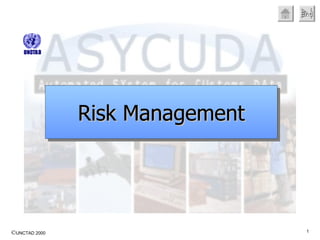Recommended
Recommended
More Related Content
What's hot
What's hot (20)
Evaluation and management of Pacemaker malfunction

Evaluation and management of Pacemaker malfunction
Static and dynamic indices of hemodynamic monitoring

Static and dynamic indices of hemodynamic monitoring
Chronic Exertional Compartment Syndrome (University of Florida)

Chronic Exertional Compartment Syndrome (University of Florida)
Echocardiographic recognition, function and dysfunction of prosthetic heart v...

Echocardiographic recognition, function and dysfunction of prosthetic heart v...
Viewers also liked
Viewers also liked (6)
Similar to Risk
Similar to Risk (20)
AbstractKey FeaturesAssessmentIntroductionMeasur.docx

AbstractKey FeaturesAssessmentIntroductionMeasur.docx
Implementation of Enterprise Risk Management with ISO 31000 Risk Management S...

Implementation of Enterprise Risk Management with ISO 31000 Risk Management S...
Risk
- 2. Mouse ‘Click’ to move on to the next slide Next What is Risk Management? Who uses Risk Management? How is Risk Management used? Risk Management in Customs How do you use it in Customs?
- 44. End
